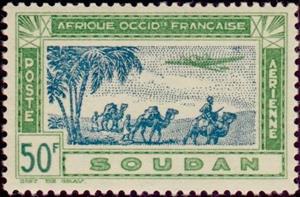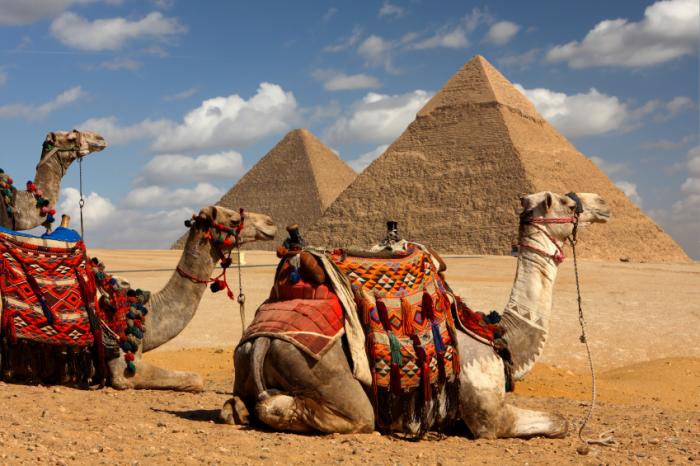Stamp: Plane and caravan (French Colonies 1942)
Plane and caravan (French Colonies 1942)
01 January (French Colonies ) within release Sudan goes into circulation Stamp Plane and caravan face value 50 French franc
| Stamp Plane and caravan in catalogues | |
|---|---|
| Yvert et Tellier: | Yt:FR-SU PA17 |
| Michel: | Mi:FR-SU 148 |
Stamp is square format.
Also in the issue Sudan:
- Stamp - Work of indigenous child protection face value 1.50+3.50;
- Stamp - Work of indigenous child protection face value 2+6;
- Stamp - Work of indigenous child protection face value 3+9;
- Stamp - Imperial Fortnight face value 1.20+1.80;
- Stamp - Airplane (SOUDAN) face value 50;
- Stamp - Airplane (SOUDAN) face value 1;
- Stamp - Airplane (SOUDAN) face value 2;
- Stamp - Airplane (SOUDAN) face value 3;
- Stamp - Airplane (SOUDAN) face value 5;
- Stamp - Plane and caravan face value 10;
- Stamp - Plane and caravan face value 20;
- Stamp - Plane and caravan face value 50;
Stamp Plane and caravan it reflects the thematic directions:
Mammals are any vertebrates within the class Mammalia (/məˈmeɪli.ə/ from Latin mamma "breast"), a clade of endothermic amniotes distinguished from reptiles (including birds) by the possession of a neocortex (a region of the brain), hair, three middle ear bones and mammary glands. All female mammals nurse their young with milk, secreted from the mammary glands. Mammals include the largest animals on the planet, the great whales. The basic body type is a terrestrial quadruped, but some mammals are adapted for life at sea, in the air, in trees, underground or on two legs. The largest group of mammals, the placentals, have a placenta, which enables the feeding of the fetus during gestation. Mammals range in size from the 30–40 mm (1.2–1.6 in) bumblebee bat to the 30-meter (98 ft) blue whale. With the exception of the five species of monotreme (egg-laying mammals), all modern mammals give birth to live young. Most mammals, including the six most species-rich orders, belong to the placental group. The largest orders are the rodents, bats and Soricomorpha (shrews and allies). The next three biggest orders, depending on the biological classification scheme used, are the Primates (apes and monkeys), the Cetartiodactyla (whales and even-toed ungulates), and the Carnivora (cats, dogs, seals, and allies).
A camel (from Latin: camelus and Greek: κάμηλος (kamēlos) from Ancient Semitic: gāmāl) is an even-toed ungulate in the genus Camelus that bears distinctive fatty deposits known as "humps" on its back. Camels have long been domesticated and, as livestock, they provide food (camel milk and meat) and textiles (fiber and felt from camel hair). Camels are working animals especially suited to their desert habitat and are a vital means of transport for passengers and cargo. There are three surviving species of camel. The one-humped dromedary makes up 94% of the world's camel population, and the two-humped Bactrian camel makes up 6%. The wild Bactrian camel is a separate species and is now critically endangered.
Animals are multicellular, eukaryotic organisms of the kingdom Animalia (also called Metazoa). All animals are motile, meaning they can move spontaneously and independently, at some point in their lives. Their body plan eventually becomes fixed as they develop, although some undergo a process of metamorphosis later on in their lives. All animals are heterotrophs: they must ingest other organisms or their products for sustenance.
An aircraft is a machine that is able to fly by gaining support from the air. It counters the force of gravity by using either static lift or by using the dynamic lift of an airfoil, or in a few cases the downward thrust from jet engines. The human activity that surrounds aircraft is called aviation. Crewed aircraft are flown by an onboard pilot, but unmanned aerial vehicles may be remotely controlled or self-controlled by onboard computers. Aircraft may be classified by different criteria, such as lift type, aircraft propulsion, usage and others.




